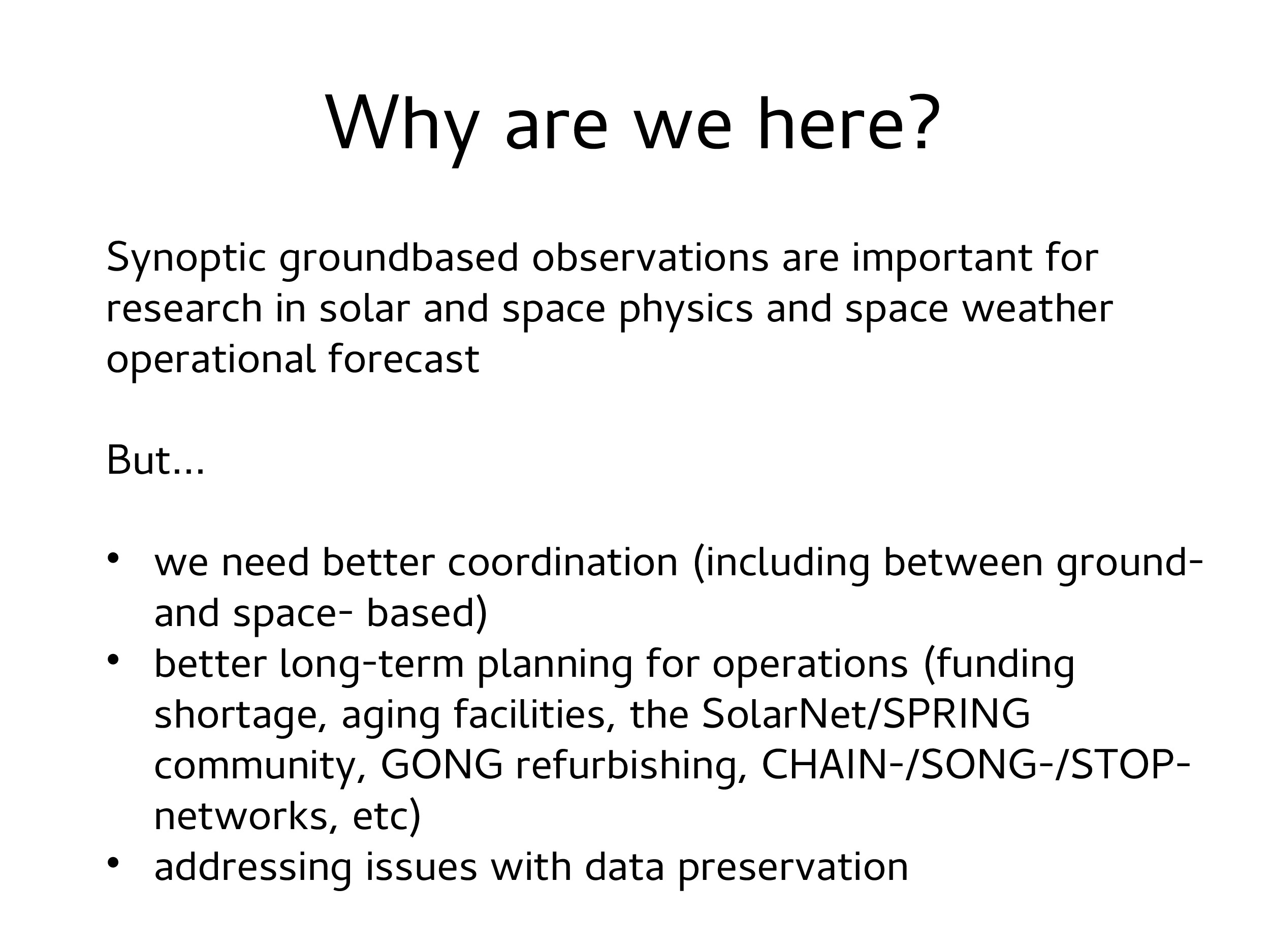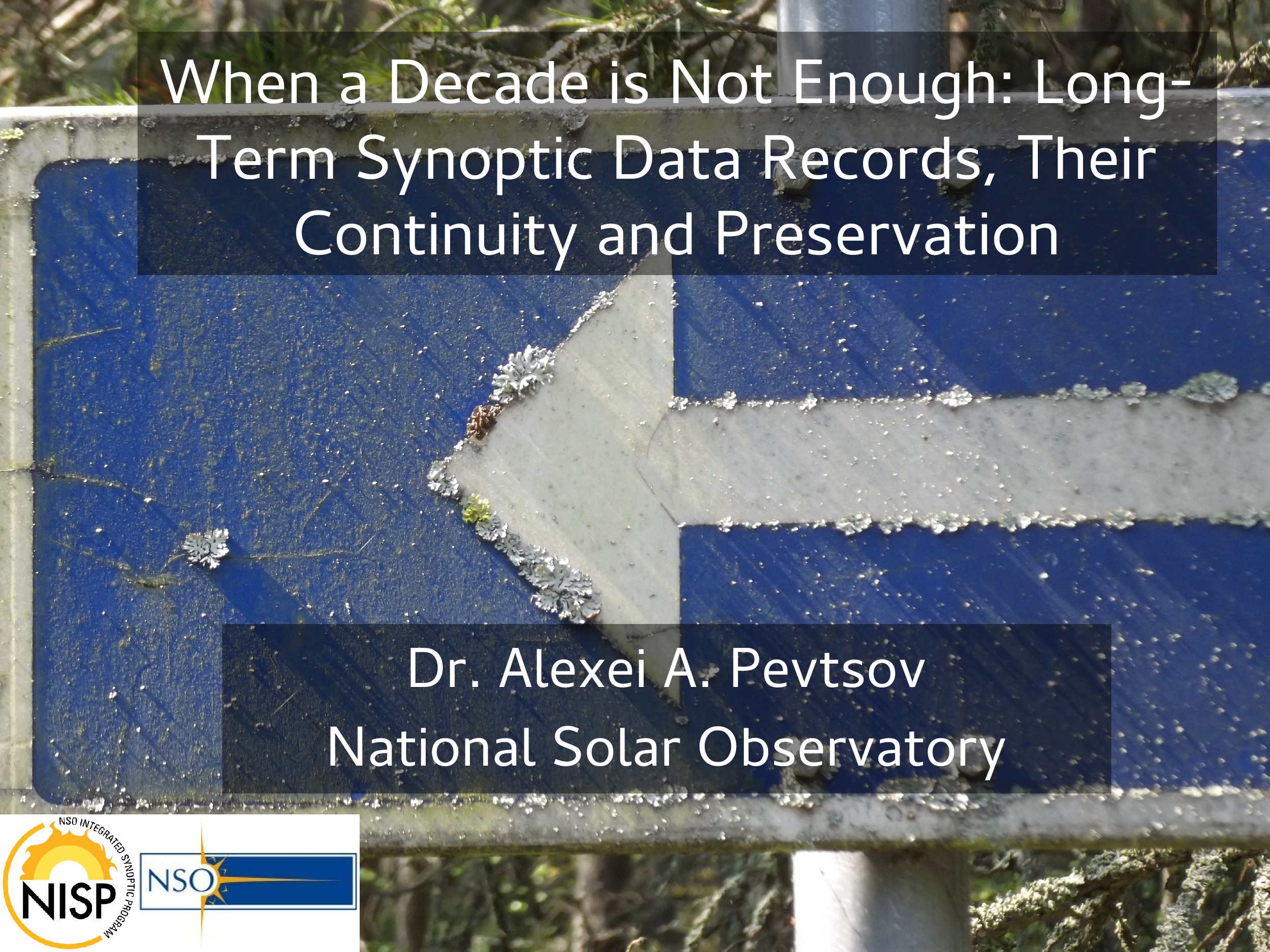Date of upload:
22.07.2018
Abstract:
This is a copy of presentation given at 14th Quadrennial Solar-Terrestrial Physics Symposium held in Toronto, Canada July 9-13, 2018.
Heliophysics research community is pushing hard to explore the Sun with new instruments in new wavelength bands, with the highest-possible spatial resolution and the fastest time cadence. We also have the societal "mandate" to develop a reliable space weather forecast. The developments in high resolution solar physics are fueled by the recent progress in adaptive optics, radiative transfer, full Stokes polarimetry, and realistic numerical modeling allowing the true fusion of state-of-the-art numerical modeling and equally sophisticated observations. Ground-based initiatives in high spatial resolution solar physics are now under development in USA (DKIST and GST), Europe and China (CLST). Future large-aperture solar telescopes have been also discussed in Europe (EST), India (NLST) and China (CGST).
Measuring magnetic fields in the chromosphere and corona has been long considered as one of critical issues for proper understanding of magnetic field topology and in improving the space weather forecast. The instruments for observing coronal magnetic fields include direct measurements at the limb (CoMP, COSMO), full Stokes polarimetry in infrared and He I 10830A in prominences, and multi-frequency observations in radio frequencies (OVRO, CSRH).
Solar phenomena often occur on large spatial scales (e.g., large-scale connectivity and flare/CME-related restructuring of solar corona) and long temporal scales of several decades or longer (solar cycles, Maunder minima). The long-term monitoring is critical for understanding of these solar phenomena, which calls for development of synoptic programs. Relevant projects include SPRING initiative (EU and USA), CHAIN project (Japan), synoptic "Solar Service" and STOP-2 network of magnetographs (Russia). In addition, there are smaller in scale projects aimed at creating facilities for specific research goals (flare prediction, sun-as-star, Brazilian magnetograph).
This talk will review the present instrument initiatives in ground-based solar and solar-terrestrial physics, and emphasize the importance of close international collaboration in this area of research.



